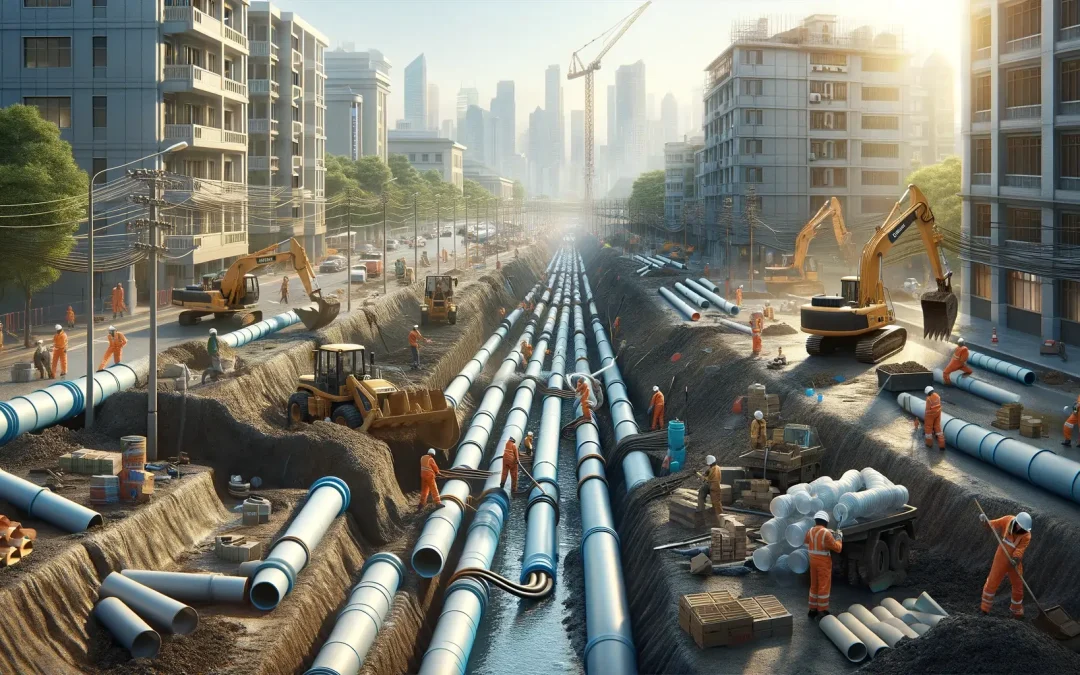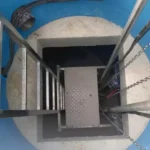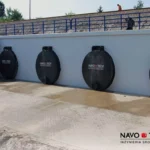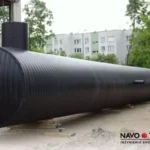Building an efficient stormwater drainage system is important for many reasons. Rainwater drainage prevents flooding of streets and properties during heavy rainfall, which protects people's property and lives. In addition, stormwater drainage helps protect the environment from pollution, as water from streets and roofs carries various pollutants, such as oils, garbage or fertilizers. If this water enters natural water bodies, it can lead to damage to ecosystems.
Our company Navotech deals with the construction of storm sewage systems in buildings of all sizes. We encourage you to contact us: [email protected]
phone: +48 32 777 11 44
Building an efficient rainwater drainage system it also helps to keep the groundwater clean, as rainwater that is not directed to the sewage system can seep into the soil and groundwater, and if contaminated, it can lead to permanent groundwater pollution.
Properly designed and constructed storm sewage system allows for quick drainage of excess water rainwater, which minimizes damage to urban infrastructure, such as land erosion or road destruction. An effective storm sewage system also allows you to collect rainwater, which can be reused, e.g. for watering gardens or washing cars. This way, instead of wasting valuable water, it can be used in an ecological and economical way.
Table of Contents:
Sewage system with water retention and storage systems
The use of storm sewage systems with water retention and storage systems is becoming more and more popular because it allows for even more effective use of rainwater.
Retention systems are solutions that allow part of the rainwater to be retained in the storm sewage system, so that the water is not immediately discharged into natural water reservoirs. The water is retained for some time in a retention tank, which can be, for example, connected to a pumping station. In this way, water is controlled and discharged into water bodies in a controlled manner, minimizing the risk of flooding and pollution.
Water storage systems, on the other hand, involve collecting rainwater in tanks that can be placed underground or above it. These tanks are usually equipped with filtration systems, thanks to which the water is properly purified. This water can then be used for various purposes, e.g. watering gardens, washing cars or as toilet water.
The use of water retention and storage systems is beneficial for several reasons. First of all, it allows for more effective use of rainwater, which contributes to water savings and reducing its consumption from water networks. Moreover, it allows for minimizing the risk of flooding and pollution, which contributes to the protection of the environment and human health.
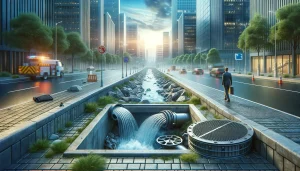
Storm sewerage
What is storm sewerage?
Storm sewerage is a drainage system that transports rainwater from rain, melting snow and excess water from watering lawns. These systems direct water runoff into natural bodies of water such as river basins, rivers and lakes. Ingredients storm sewage system include surface drainage points, typically located at street level, just off sidewalks, and underground pipes or tunnels that redirect water to other locations.
It is important to distinguish storm sewers from sanitary sewers because they are two different systems. Discharging sanitary sewage into storm sewage systems may lead to contamination of local water bodies, which in turn may cause disease and environmental degradation.
Modern storm sewage systems are designed to direct water runoff to special stormwater management reservoirs. At these locations, the water is treated, allowing contaminants and other materials in the water to settle before being released into the environment. Storm sewerage plays a key role in drainage systems, preventing floods caused by rains, monsoons and other precipitation.
Avoid introducing hazardous substances such as chemicals, petroleum derivatives, engine oil, paints or cleaning products, as they may harm delicate aquatic ecosystems. Similarly, leaves, grass clippings and other organic waste should not be thrown into the system to avoid blocking water flow and potential flooding during heavy rainfall.
The use of flow regulators in rainwater drainage systems
Flow regulators Rainwater tanks are elements of rainwater drainage systems, which are used to protect these systems against excessive rainfall. Their main purpose is to prevent storm water drainage from overloading, which can lead to flooding of streets, properties and other urban areas, as well as environmental pollution.
Flow regulators Rainwater systems work by limiting the amount of water that can flow into the stormwater system in a given period of time. This ensures that rainwater is controlled and discharged into natural water bodies in a controlled manner, minimizing the risk of flooding and pollution.
In the context of a changing climate, which contributes to more and more frequent and intense rainfall, flow regulators rainwater are even more important. Heavy rains are also becoming more frequent in Poland, leading to overloading of storm sewage systems and floods. Therefore, such climatic changes should be taken into account in the planning and construction of stormwater drainage systems and should be taken into account in the design of stormwater drainage systems.
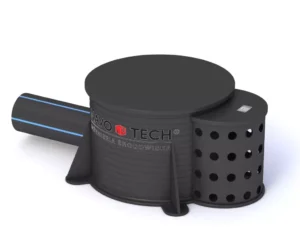
In Poland, there are regulations that regulate the construction and use of rainwater drainage systems, including those regulating the protection of these systems against excessive rainfall. It is worth remembering that effective protection of rainwater drainage systems against excessive rainfall is not only a matter of compliance with regulations, but also care for the safety and proper functioning of urban infrastructure and protection of the natural environment.
Water pumping stations in rainwater drainage systems
Water pumping stations Rainwater pipes are elements of rainwater drainage systems that are used to pump rainwater from a low level to a higher one when the stormwater drainage system is below ground level.
They protect stormwater drainage systems by preventing excessive accumulation of rainwater in places where there is no natural slope, which can lead to flooding and flooding of areas below ground level. Rainwater pumping stations allow for controlled discharge of water to natural water reservoirs or other elements of the rainwater drainage system.
It is important that stormwater drainage systems are designed in a way that allows effective use of stormwater pumping stations. When designing rainwater drainage systems, the following should be taken into account: the location of the pumping station, the amount of water that will need to be pumped and the required power of the pumps.
Well-designed and functioning rainwater pumping stations are essential for effective protection against the effects of heavy rainfall, especially in urban areas. In Poland, due to the occurrence of downpours and intense rainfall in some regions, storm sewage systems with rainwater pumping stations constitute an important element of urban infrastructure.
summarizing
Efficient storm water drainage is a key element of urban infrastructure, which allows you to control and protect areas against the effects of heavy rainfall. In Poland, due to the increasingly frequent occurrence of downpours and storms, rainwater drainage systems with retention systems, water storage and pumping stations are necessary solutions that help prevent floods and other catastrophic effects of heavy rainfall.
Properly designed and functioning rainwater drainage systems allow for the collection of rainwater and its controlled discharge to natural water reservoirs or to other elements of the stormwater drainage system. To ensure effective operation of the system, it is necessary to use appropriate technological solutions, such as water retention and storage systems and pumping stations.
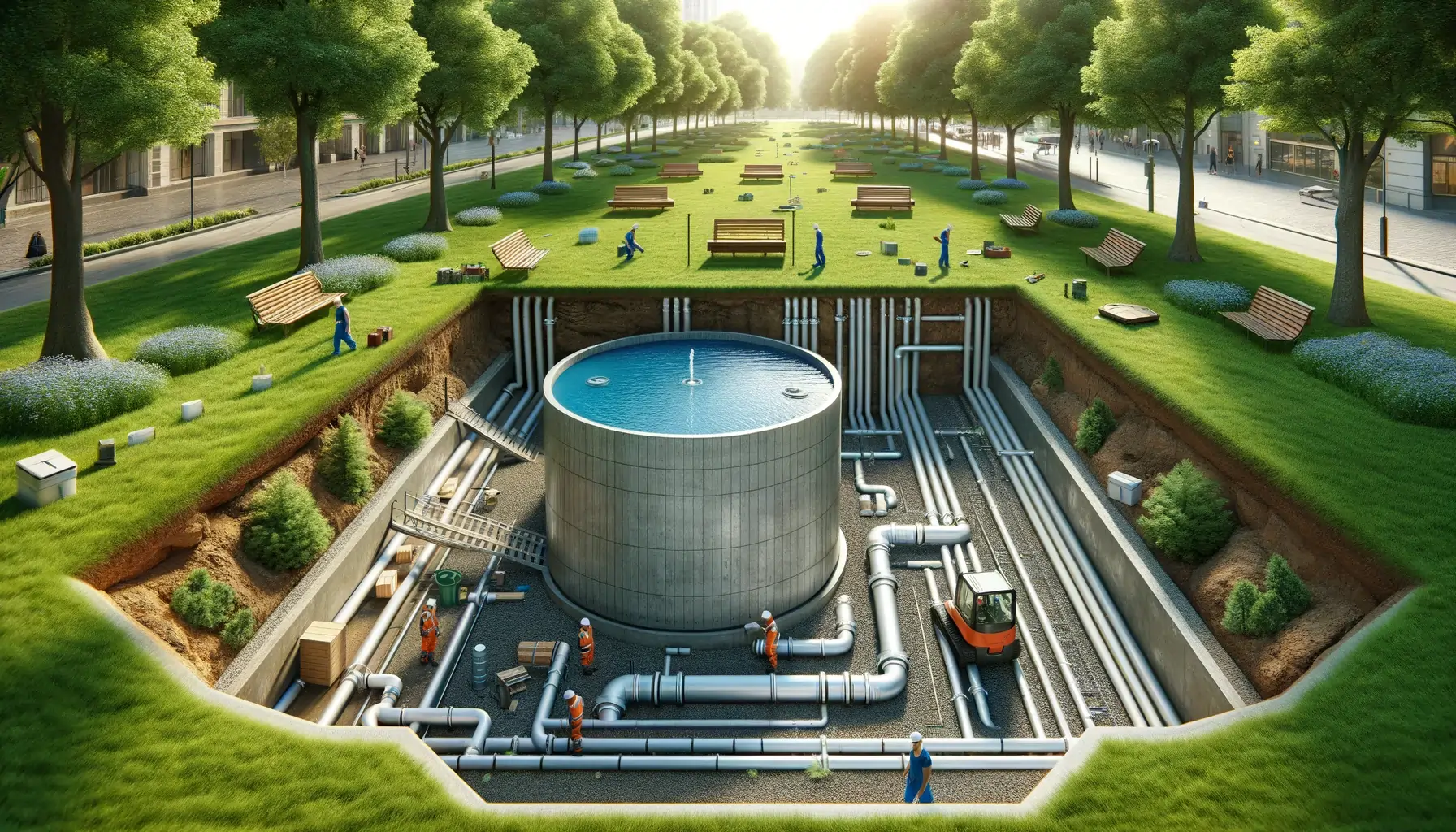
Navotech company from Zabrze offers comprehensive solutions for rainwater drainage systems. Thanks to advanced technologies and experience, Navotech designs and manufactures rainwater drainage systems, taking into account the individual needs and requirements of customers. The company also offers constant care and technical service, ensuring full functionality and reliability of the systems.
Due to the changing climate and more and more frequent rainfall, rainwater drainage systems with retention systems, water storage and pumping stations are becoming more and more important for the safety and protection of urban areas. Navotech offers comprehensive solutions that allow for effective and efficient management of rainwater, counteracting the effects of heavy rainfall and protection of areas against floods.
To sum up, an efficient rainwater drainage system with retention systems, water storage and pumping stations are necessary solutions to ensure the safety and protection of areas against the effects of heavy rainfall. Navotech offers comprehensive solutions for rainwater drainage systems that allow effective and efficient rainwater management and ensure full functionality and reliability of the systems.
Author: M.Sc. Eng. Adam Głogowski

